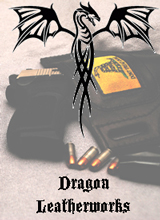No idea what would cause this except a defect in the brass. I wouldn’t let it destroy my faith in .357 Sig because I have none (Gotta Razz Wally and MikeW.) or Speer Gold Dot which is a VERY nice loading.
Just interesting to see.
Also I’m curious how they got the neck out of the chamber “using a small screwdriver” without marring their fancy-pants conversion barrel.



Could that have anything to do with setback? Pretty crazy seeing that with a factory load though I’ll keep carrying Gold Dots in my 9mm and .45 carry guns.
I suspect setback would have blown out the head, and another big stress point is at the shoulder.
As this case cracked right at the middle, maybe it was annealed wrong, or maybe it was just a bad peice of brass with a crystal or a void in it. Who knows….
I’ll just say “Freak Accident”, and I would still trust Gold Dot.
Hey that is an interesting one.
The only thing I noticed is there is a pronounced “ring” raised on the primer around the firing pin impact, but that is on all cases and is more likely a factor of the taurus slide – since the primer isn’t raised overall. The brass looks pretty decent – at least with the quality of the vid. If the barrel were porked, it would cause more failures.
It is pretty difficult to get a case to seperate on initial firing. The clean-cut ring appears pretty similar to a case head failure as seen after the nth loading of a rifle round. While certainly unlikely, it’s not impossible to have a brass defect that resulted in a sheared face after the 40,000 PSI blast.
Last weekend, I consumed a box of that exact load. Had been my carry ammo for 2+ years and was time to burn it. No problems, but that should be no surprise. The last 1k cases that I loaded were all speer nickel plated, ex-LEO cases – so I would only assume they were all gold dot loadings. Didn’t see any issue wth the cases and ran ~175 of them through the glock last weekend too. And this vid isn’t stopping my progress on the .357AR 🙂
Agreed with Wally. I do think setback could have been a factor in raising pressure to trip that case failure, assuming the brass was really at fault – the .357SIG has no crimp, so setback is a real possibility. Also that bullet broke apart where the others retained integrity, another point for there having been pressure issues.
Good point on the odd bullet performance, still wouldn’t an overpressure be more likely to scarp out the head or the neck rather than the case body? I just imagine where this case failed was probably the most supported location in the chamber, leads me to think it might be a bad piece of brass.
I’d agree with that conclusion. That’s an unusual place for a case failure. Won’t stop me from carrying that exact load in my P229 though.
I just wish I could find the 23918 load in 50 round boxes (53918) they seem to have disappeared and I don’t want the other more common .357SIG Gold Dot load
I have yet to dissect a .357 gold dot round – but when I handload my 357 recipie, I run around 10 grains of powder which gets the case pretty full. One of the side effects of the heavy charge is the volume helps resist setback. IIRC, a case completely filled with my powder will contain 14 grains… 10 just about fills the body and shoulder.
Overpressure would cause the case to fail at the weakest point of the case – or more specifically the spot on the case under the most stress. – a combination of internal pressure, external support, and case integrity.
Wouldn’t that be the head or the shoulder?
Not if the case is well supported there in the chamber and the brass has a defect farther back. Note there was no kaboom or distortion of the brass at all, which you’d expect if a weakly supported section failed. I suspect it cracked under pressure and then the extraction simply pulled the sections apart. I agree a flaw in the brass was the likely primary cause; I am adding setback/pressure as an extra thinking point because of the rarity in ever seeing new high-end production brass with a failure like that at all.
Depends how the extraction interacted with an expanded case. The neck/shoulder would (should?) expand more due to the greater hoop stress in the thinner walled sections. If I were to guess, the extractor was pulling and the neck was still holding.
Maybe – just maybe – a combination of a taurus (really? c’mon) lockup action, taurus mainspring, and a barrel for a round with a significantly different recoil impulse. Maybe.